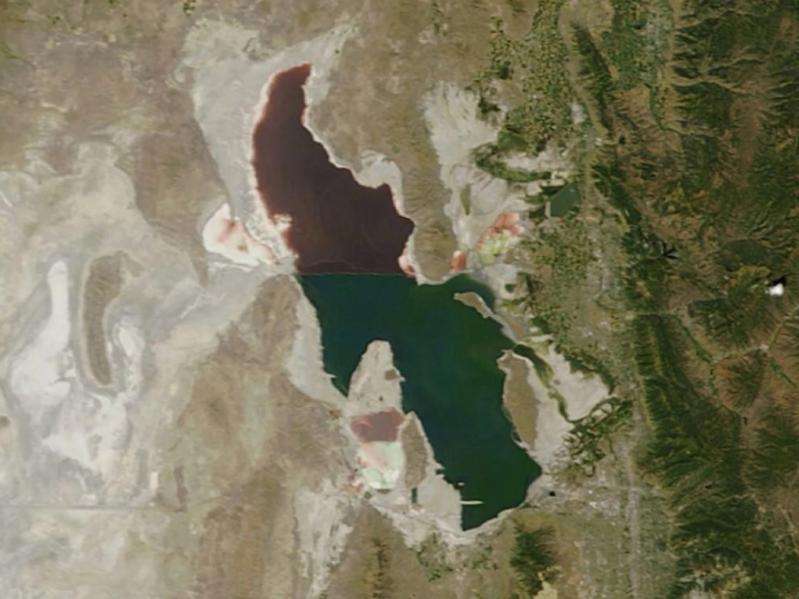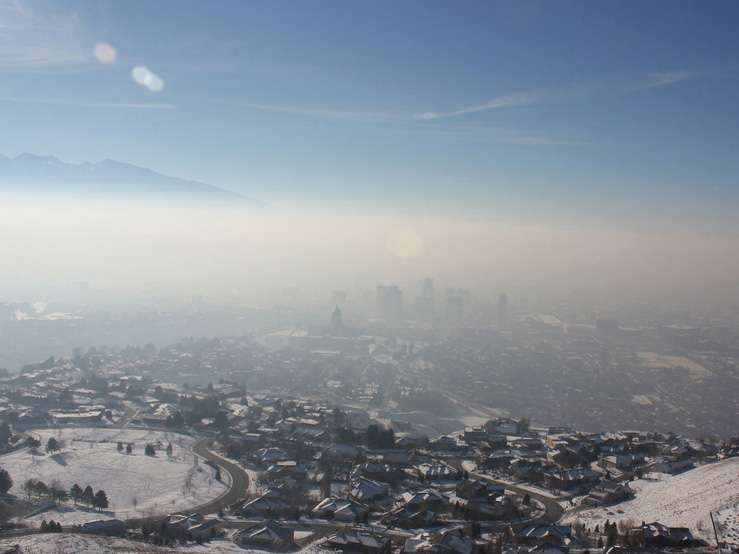Dry lake city: Great Salt Lake is shrinking

Utah's Great Salt Lake is the defining physical feature of its arid Western state. Seventy-five miles long and nearly 35 miles wide, the salt water remnant of ancient Lake Bonneville teems with aquatic life, serves as a critical flyway for millions of migratory birds and provides economic value of $1.32 billion per year for mineral extraction, brine shrimp cyst production and recreation.
Yet the lake, adjacent to its namesake capital city, is a body of water potentially bound for the chilling fate of the world's other salt lakes that have dried up and caused massive environmental damage says a USU-led group of scientists and state water managers.
In the white paper, "Impacts of Water Development on Great Salt Lake and the Wasatch Front," published Feb. 24, 2016, authors Wayne Wurtsbaugh, Sarah Null and Peter Wilcock of Utah State University; Craig Miller of the Utah Division of Water Resources, Maura Hahnenberger of Salt Lake Community College and Frank Howe of USU and the Utah Division of Wildlife Resources, detail the dramatic effects of water uses and climatic fluctuations on the terminal lake's levels since 19th century pioneer settlement.
"There's no doubt about it, Great Salt Lake is shrinking," says Wurtsbaugh, professor in USU's Department of Watershed Resources and the USU Ecology Center, and lead author on the paper. "Though we've witnessed droughts and floods in recent decades, impacts of water diversions have decreased the lake's level by 11 feet."

Utahns should tread carefully with proposals to further develop the lake's water supply, the researchers warn.
"As a state, we've made positive strides in water conservation, but these equate to only a two percent overall reduction of water use," Wurtsbaugh says.
Those measures are not enough, the team says, to head off lowering lake levels and the associated problems with a declining Great Salt Lake.
"Loss of water in the lake threatens its unique ecology, along with the wildlife and industries that depend on the lake's ecosystem services," Wurtsbaugh says. "Further, lowering lake levels increase dust pollution, which worsens the health effects of the Salt Lake City area's already serious air pollution problems."
More information:
Referenced White Paper: "Impacts of Water Development on Great Salt Lake and the Wasatch Front," W. Wurtsbaugh, C. Miller,S. Null, P. Wilcock, M. Hahnenberger and F. Howe.
www.qcnr.usu.edu/pdfs/publications/Great%20Salt%20Lake%20Water_Feb%2024%202016.pdf
Provided by Utah State University



















